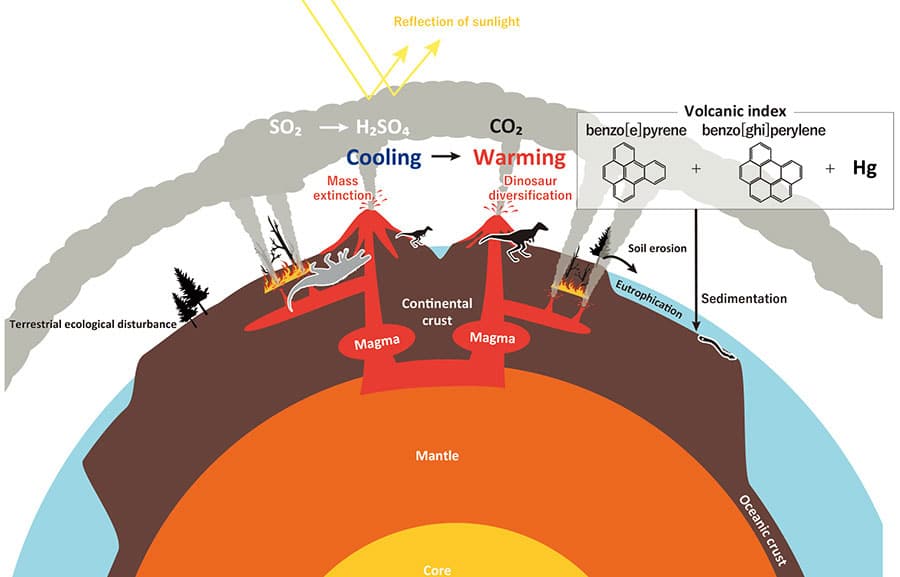Climatic fluctuations created by significant volcanic eruptions lead to evolutionary changes. Yet, the cooling and warming of climate rely on the volcanic temperature of the eruption.
One of the most significant mass extinction events happened around 201 million years ago when perhaps 60-70% of animal species went extinct. As a result, small-bodied dinosaurs were able to grow and prosper.
According to scientists, the eruptions in the Central Atlantic Magmatic Province triggered the fourth mass extinction. The Central Atlantic Magmatic Province is one of the largest regions of volcanic rock.
However, the correlation between the eruption and mass extinction has not yet been clarified. Recently, scientists from Tohoku University used analysis of sedimentary organic molecules and a heating experiment to demonstrate how low-temperature magma slowly heated sedimentary rocks, causing high sulfur dioxide (SO2) and low carbon dioxide emissions (CO2).
The SO2 gas was dispersed throughout the stratosphere, converting to sulfuric acid aerosols. The immediate increase of global albedo caused short-term cooling, which added to the mass extinction.
Scientists collected marine sedimentary rock samples from Austria and the United Kingdom. They analyzed the organic molecules and mercury (Hg) in the samples. They found four discrete benzo[e]pyrene + benzo[ghi]perylene + coronene -Hg enrichments.

Kunio Kaiho from the Tohoku University said, “The discovery of low coronene in the first enrichment was particularly revealing. The second, third, and fifth mass extinction had high coronene concentrations. A low concentration indicates that low-temperature heating caused high SO2 release and global cooling.”
“We believe the extinction was the product of large volcanic eruptions because the benzo[e]pyrene + benzo[ghi]perylene + coronene anomaly could only be seen around the time frame of the mass extinctions.”
Journal Reference:
- Kunio Kaiho, Daisuke Tanaka et al. Volcanic temperature changes modulated volatile release and climate fluctuations at the end-Triassic mass extinction. DOI: 10.1016/j.epsl.2021.117364
